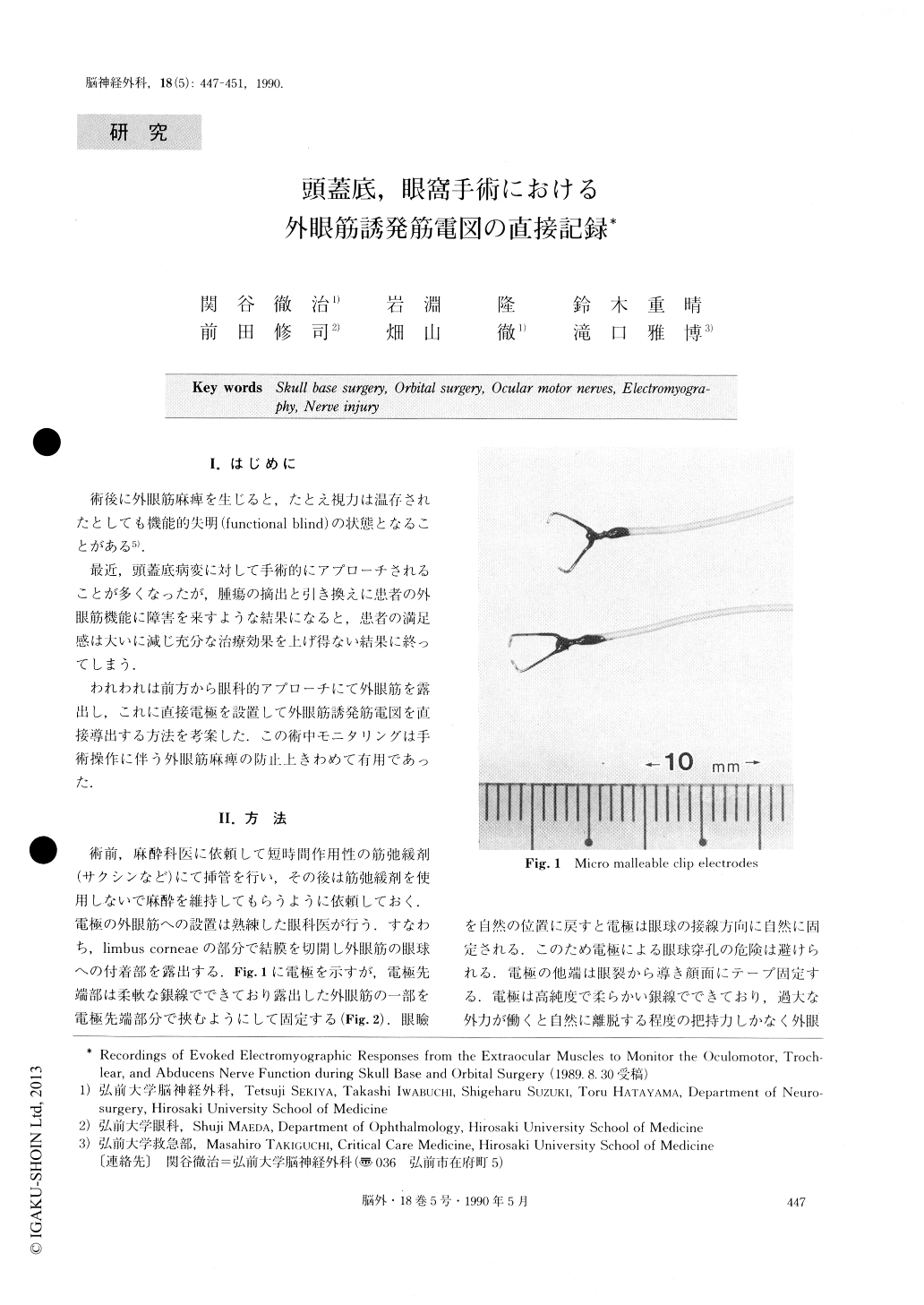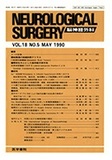Japanese
English
- 有料閲覧
- Abstract 文献概要
- 1ページ目 Look Inside
I.はじめに
術後に外眼筋麻痺を生じると,たとえ視力は温存されたとしても機能的失明(functional blind)の状態となることがある.
最近,頭蓋底病変に対して手術的にアプローチされることが多くなったが,腫瘍の摘出と引き換えに患者の外眼筋機能に障害を来すような結果になると,患者の満足感は大いに減じ充分な治療効果を上げ得ない結果に終ってしまう.
われわれは前方から眼科的アプローチにて外眼筋を露出し,これに直接電極を設置して外眼筋誘発筋電図を直接導出する方法を考案した.この術中モニタリングは手術操作に伴う外眼筋麻痺の防止上きわめて有用であった.
Abstract
The methods to record evoked electromyographic re-sponses by micro malleable clip electrodes applied directly to the extraocular muscles are described. This electrophysiological monitoring enables surgeons to localize the ocular motor nerves accurately in the skull base of the middle, posterior fossa, and orbit. In caver-nous sinus surgery, electrical stimulation over the dura elicited vigorous responses from the extraocular mus-cles and subsequently it was possible for the surgeon to avoid severing the ocular motor nerves. In orbital surgery, distended and thinned extraocular muscles were precisely localized and preserved anatomically and functionally. These monitoring methods may play the same role as electrical stimulation to the facial nerves in acoustic neuroma surgery.

Copyright © 1990, Igaku-Shoin Ltd. All rights reserved.


